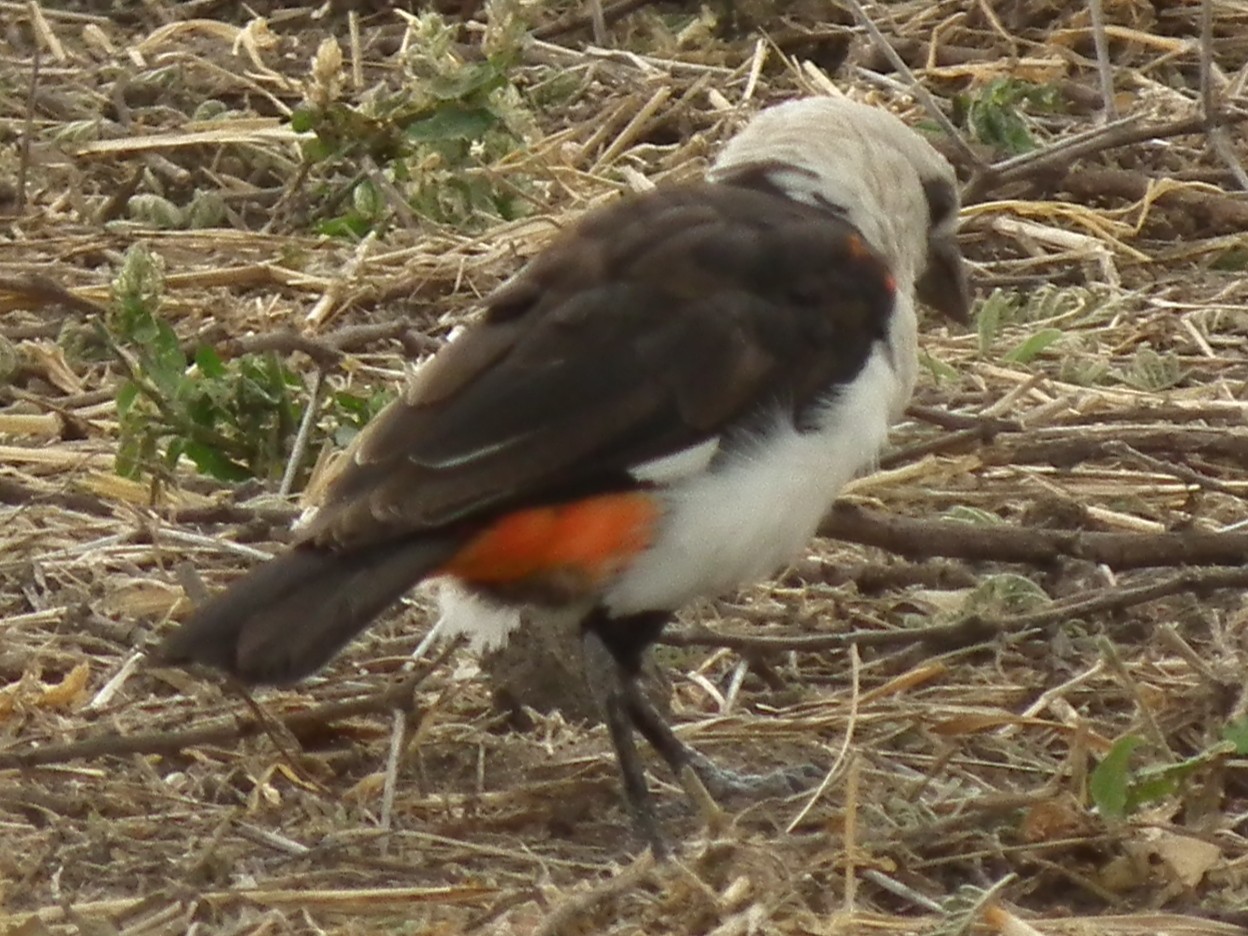White-headed Buffalo Weaver
A species of White-headed Buffalo-weavers Scientific name : Dinemellia dinemelli Genus : White-headed Buffalo-weavers
White-headed Buffalo Weaver, A species of White-headed Buffalo-weavers
Botanical name: Dinemellia dinemelli
Genus: White-headed Buffalo-weavers
Content
Description People often ask General Info
 Photo By Nevit Dilmen , used under CC-BY-SA-3.0 /Cropped and compressed from original
Photo By Nevit Dilmen , used under CC-BY-SA-3.0 /Cropped and compressed from original Description
The white-headed buffalo weaver is 170 to 190 mm (6.7–7.5 in) in length and 57 to 85 g (2.0–3.0 oz) in weight. In addition to its white head and underparts, the white-headed buffalo weaver has a vividly orange-red rump and undertail coverts. Its thighs are dark brown. Narrow white bands can be found on the wings. Both sexes are similar in plumage and hard to differentiate. The bill is conical and black. D. d. dinemelli has a brown tail, whereas D. d. boehmi has a black tail. 
Size
18 cm
Nest Placement
Shrub
Feeding Habits
White-headed Buffalo Weaver predominantly consumes insects, seeds, and fruit, with a diet rich in beetles and caterpillars. This species often forages on the ground in small groups, and is known to feed alongside other birds, particularly in mixed-species flocks in open woodlands.
Habitat
The white-headed Buffalo Weaver is commonly found in African savannas, shrublands, and particularly thrives in dry bushland and acacia thickets. This species exhibits a preference for the lower elevations, typically below 1400 meters, and is seldom associated with grassland or riverine vegetation areas.
Dite type
Omnivorous
People often ask
General Info
Feeding Habits
Bird food type
Behavior
Like most weavers, it is a gregarious bird which forages on the ground for insects, especially beetles and butterflies, fruits, and seeds, often in company with starlings. Foraging is often done in groups of 3–6 birds. It has various calls and the sound is sometimes parrot-like: “skwieeer”, “kiiyerr”, a ringing and repetitious “tew”. In addition, variable sounds such as chuckles and whistles can be heard at breeding and roosting sites. The sounds are slow and drawn out. They also make trills: “tsu-weely-weely-wair”. They often perch in trees and hang upside-down and can be very noisy. Breeding and roosting is done in groups and they can be defensive against intruders, usually by making noise. Altercations are rarely fatal and usually vocal. Males display to females by spreading their wings to show their white wing-patches and red-orange tail-coverts. Breeding pairs are monogamous and nests are built together. The breeding season is related to rainfall and varies according to local conditions. Nest materials are pushed together, not interwoven, to form an oval 570 millimetres (22 in) wide. A short entrance tube opens downwards and is about 2 to 4 metres (6.6–13.1 ft) above the ground. Soft materials line the inner portions of the nest, which usually has several rooms, with defensive thorny branches on the outside. A large tree will have several of their nests, which other birds, such as the African pygmy-falcon, are known to use instead of building their own. The female incubates 3–5 greyish to pale blue eggs with red, brown and olive markings for 11–14 days. Both parents feed the chicks. 
Distribution Area
The white-headed buffalo weaver is native to the African countries of Ethiopia, Kenya, Somalia, Sudan, Tanzania, and Uganda. It prefers habitats such as savanna, and shrublands, but especially dry brush and acacia thickets. 
Species Status
Not globally threatened.
Scientific Classification
Phylum
Chordates Class
Birds Order
Perching birds Family
Weavers Species
White-headed Buffalo Weaver